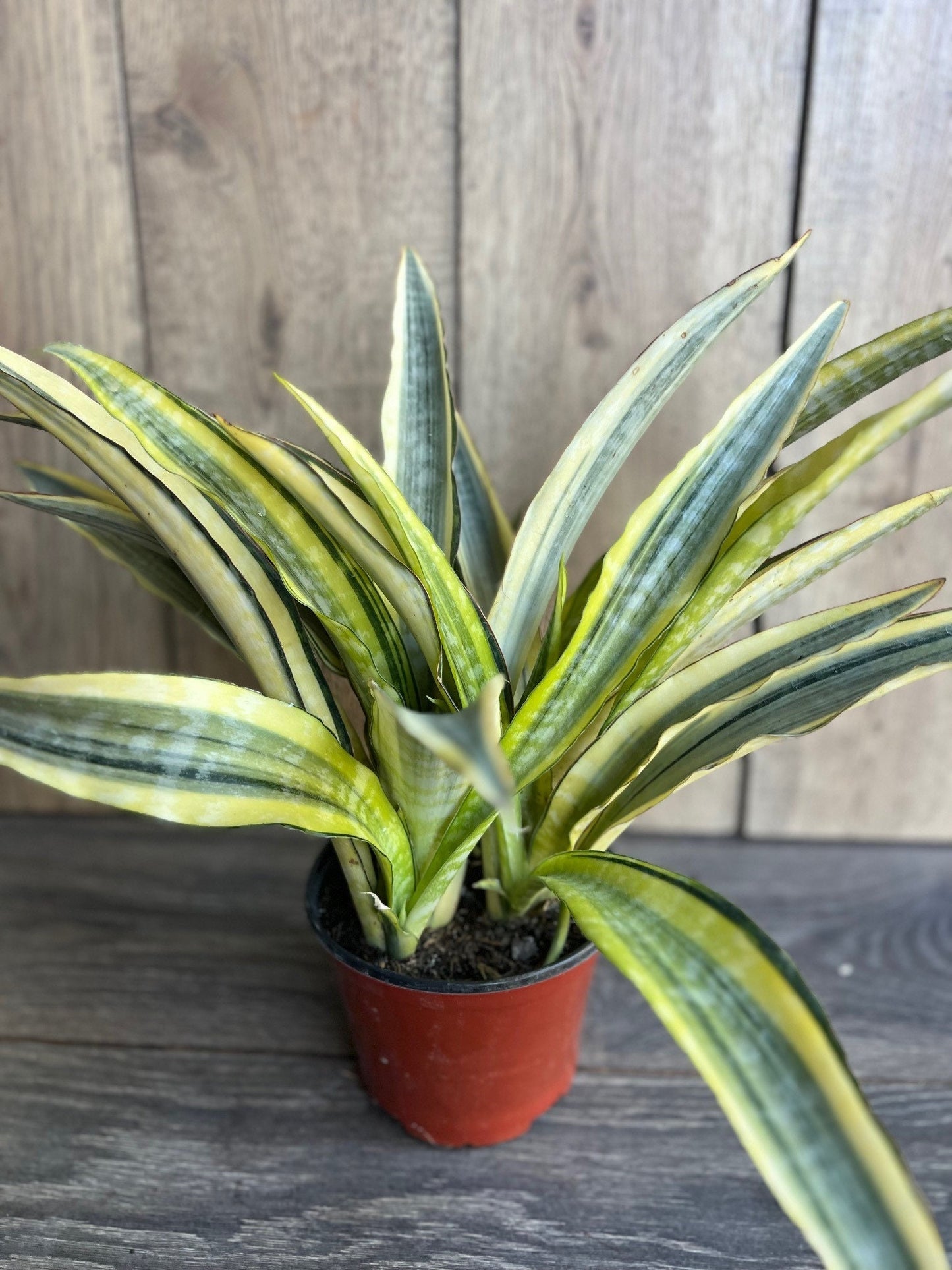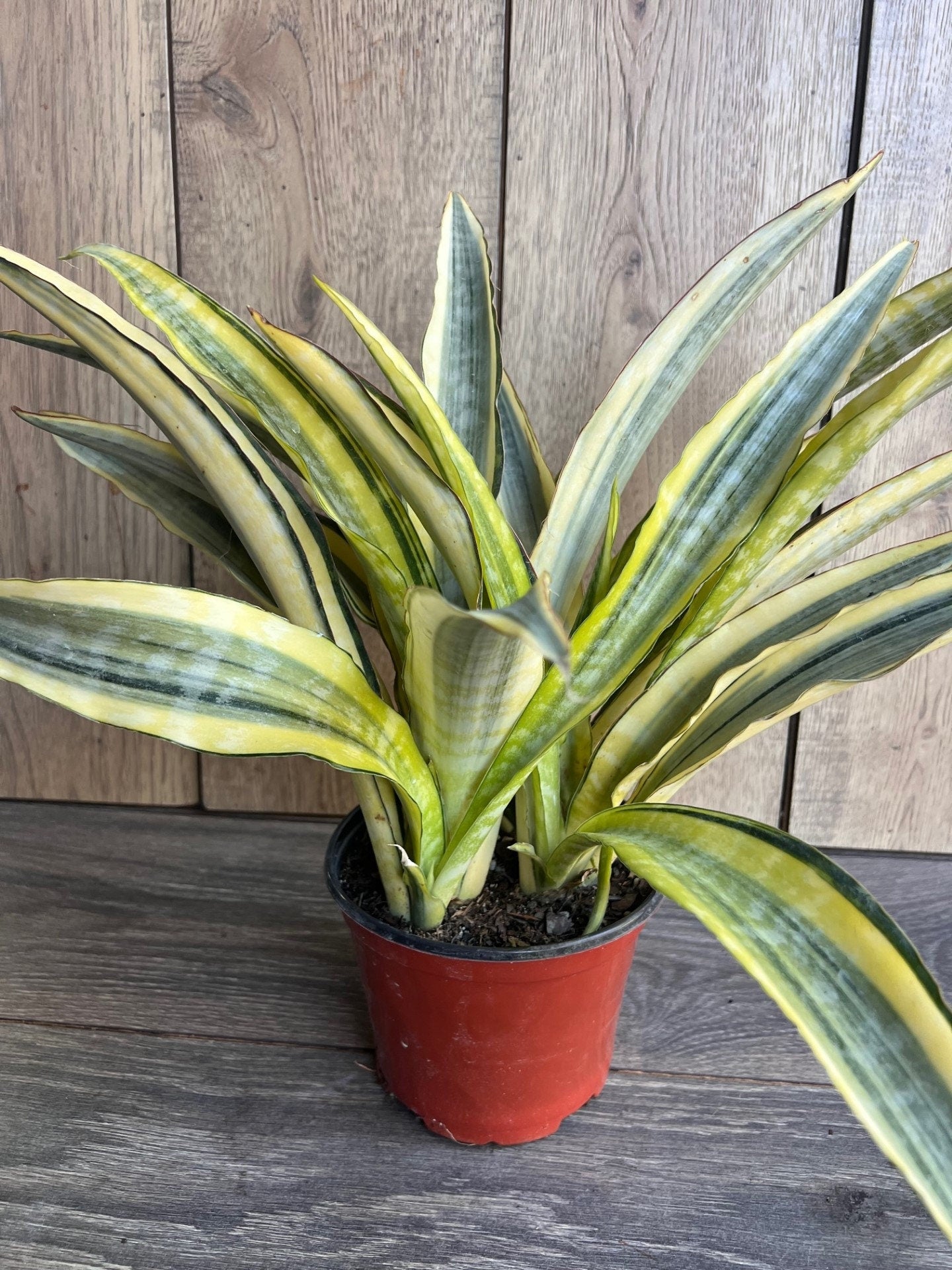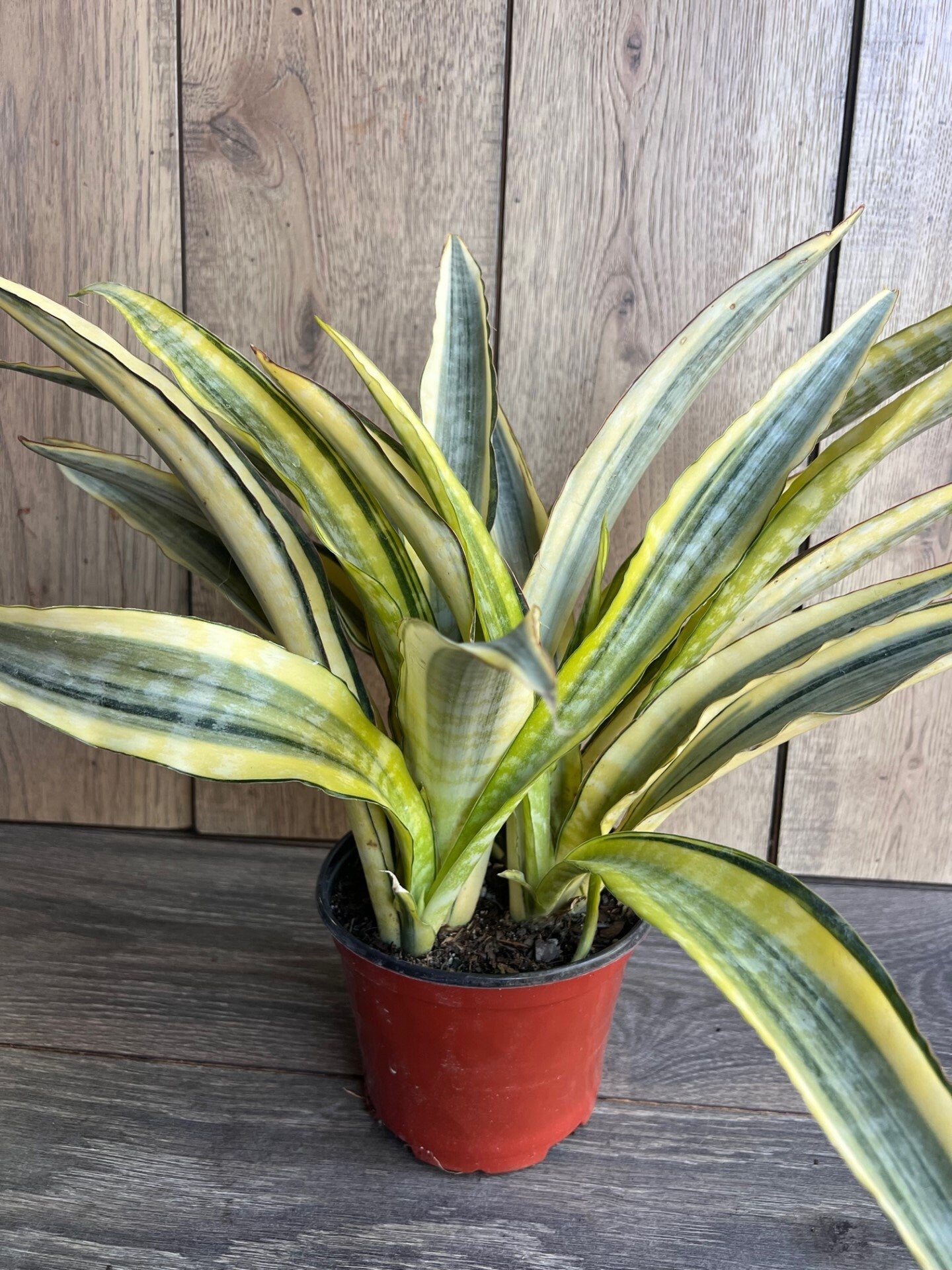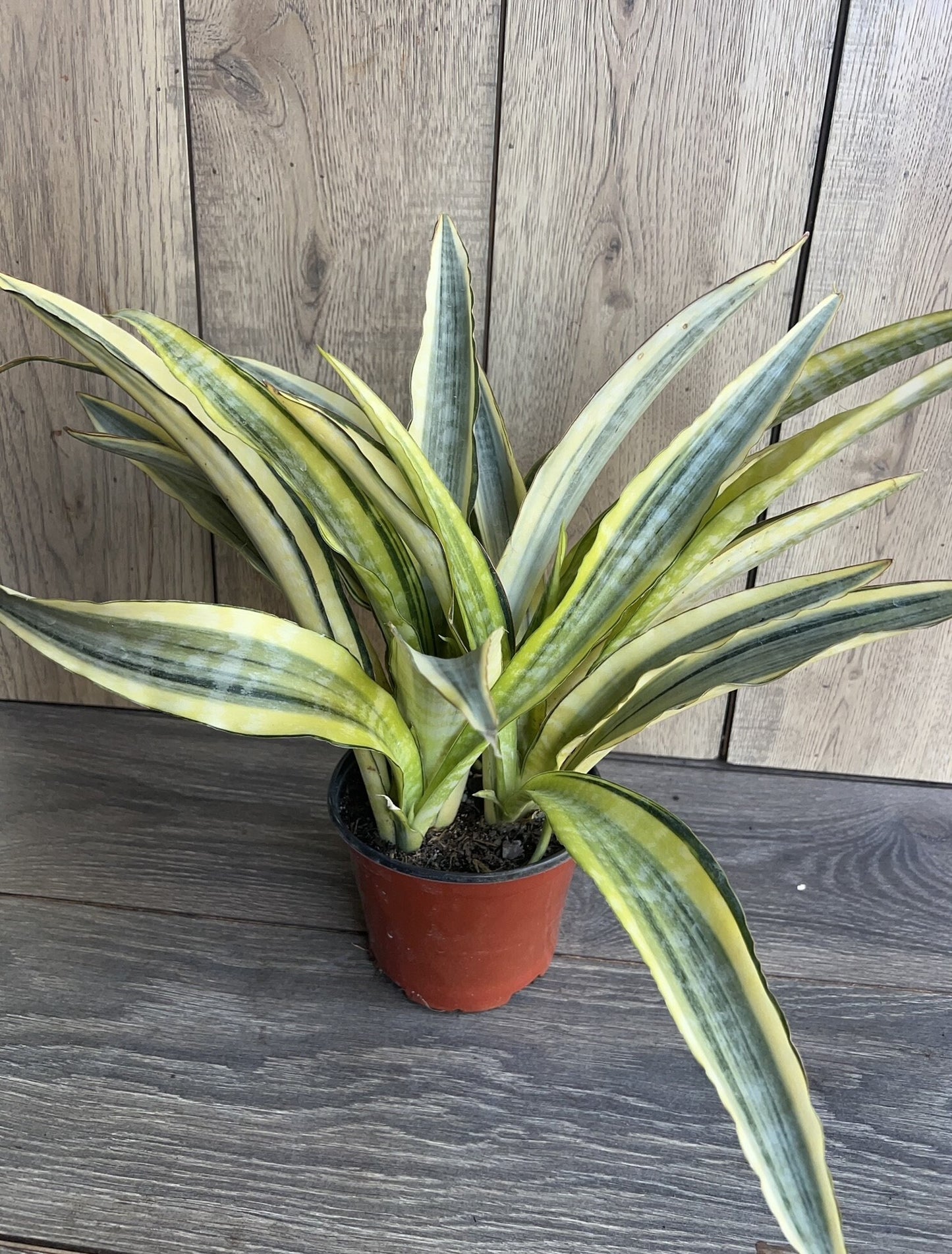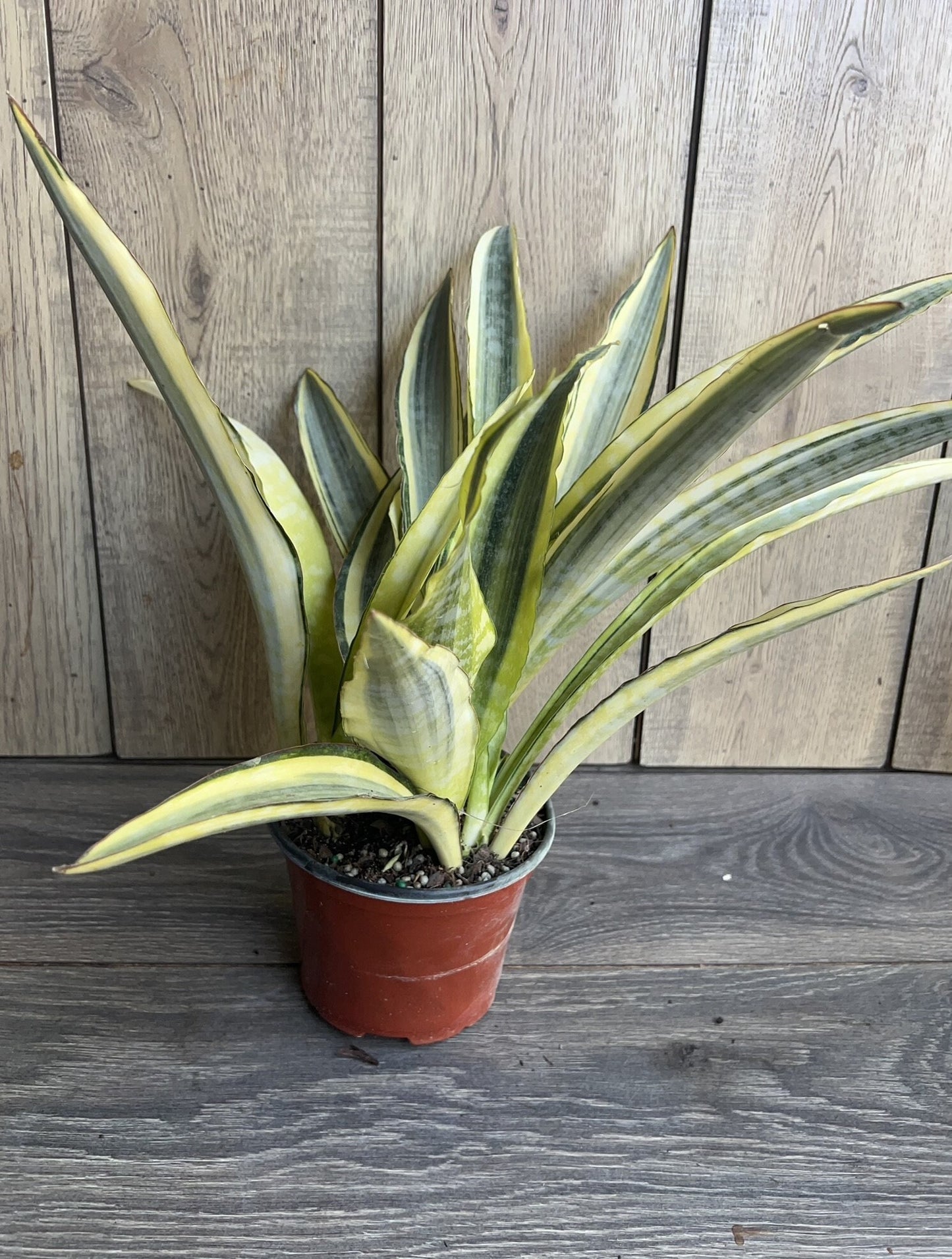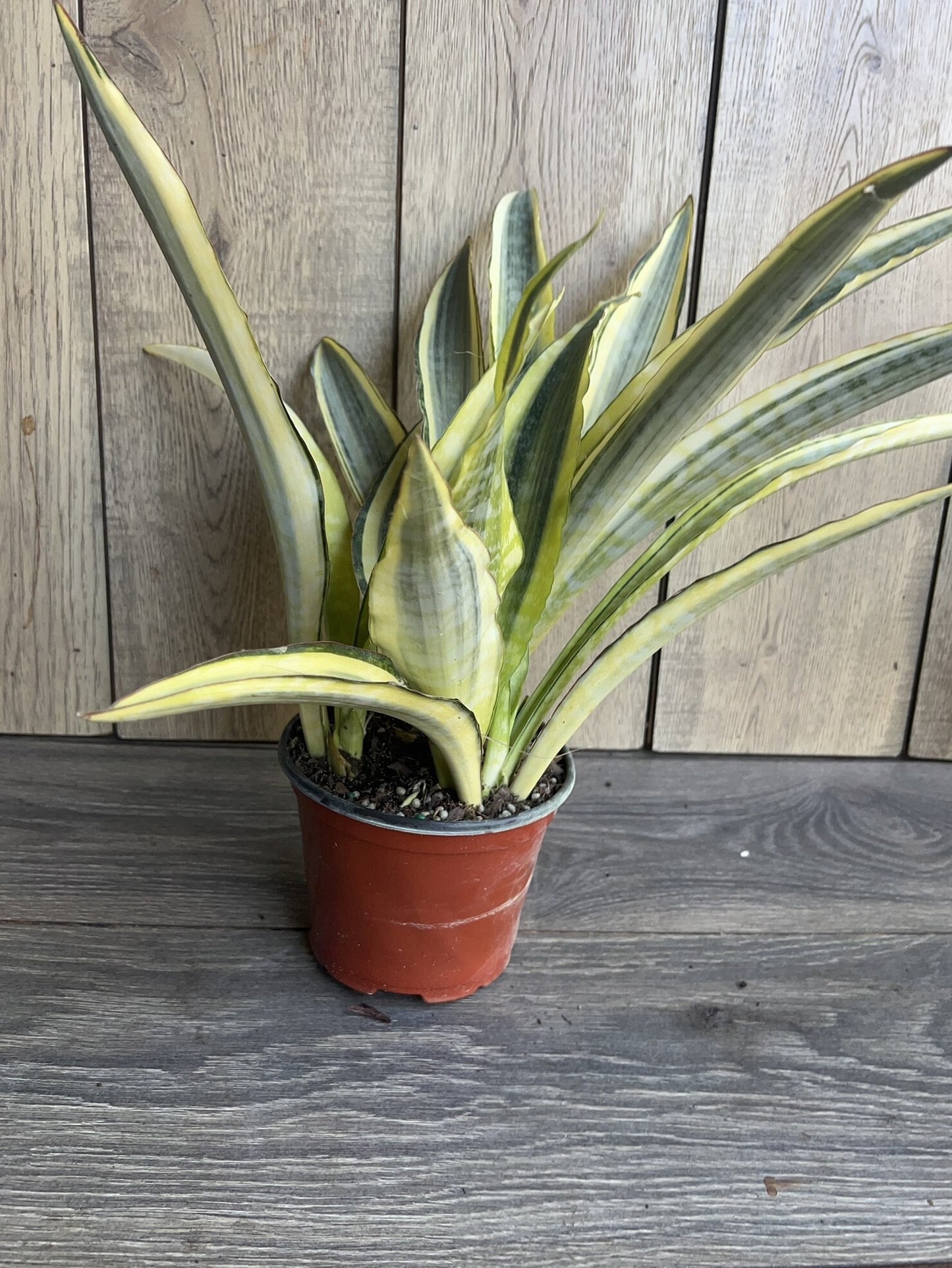Sansevieria Lauren in 6" pot, rare
Sansevieria Lauren in 6" pot, rare
Couldn't load pickup availability
Note: You will receive Sansevieria Lauren in 6" pot similar to the pictures.
Sansevieria 'Lauren' is a striking cultivar of Sansevieria known for its elegant, upright, and slender leaves. The leaves are typically dark green with lighter, subtle horizontal stripes, creating a sleek, minimalist look. This variety tends to grow in a rosette formation, with the leaves reaching up to 12-18 inches tall, making it a compact and visually appealing addition to any space. Like other Sansevieria varieties, 'Lauren' is highly resilient, drought-tolerant, and thrives in a variety of light conditions, from low to bright indirect light. Its air-purifying properties and low-maintenance care requirements make it an excellent choice for beginners or anyone seeking a plant that can adapt to busy or indoor environments.
1. Light
- Bright, indirect light: Sansevieria 'Lauren' prefers bright, indirect light for optimal growth, but it is quite adaptable and can tolerate lower light levels. In lower light, the plant will grow more slowly, and the colors of the leaves may become less vibrant. Avoid direct sunlight, as it can scorch the leaves, especially in hot climates.
2. Watering
- Infrequent watering: Like all Sansevieria species, 'Lauren' is drought-tolerant and prefers to dry out completely between waterings. Water the plant about every 2-3 weeks, or when the soil is dry to the touch. Overwatering is the most common cause of issues with snake plants, so ensure the soil has good drainage, and avoid letting the plant sit in water.
3. Soil
- Well-draining soil: Sansevieria 'Lauren' thrives in well-draining soil, such as cactus or succulent mix. If using regular potting soil, mix it with sand or perlite to improve drainage and avoid water retention, which can lead to root rot. Well-draining soil is key to maintaining the health of this plant.
4. Temperature
- Warm temperatures: Sansevieria 'Lauren' prefers temperatures between 60°F and 85°F (16°C to 29°C). It should not be exposed to temperatures below 50°F (10°C) as it is sensitive to cold and frost. Avoid placing it in areas with cold drafts, as it may damage the plant.
5. Humidity
- Average to low humidity: Sansevieria 'Lauren' does well in typical indoor humidity levels and doesn't require special humidity conditions. It can tolerate dry air, so there’s no need for extra misting or humidifiers in most indoor environments.
6. Fertilizing
- Fertilize sparingly: Fertilize Sansevieria 'Lauren' once a month during the growing season (spring and summer) using a diluted, balanced liquid fertilizer. Avoid fertilizing in fall and winter, when the plant’s growth naturally slows down. Over-fertilizing can damage the plant, so it’s better to under-fertilize than to overdo it.
7. Pruning
- Minimal pruning: Sansevieria 'Lauren' requires very little pruning. You can trim off any dead or damaged leaves to maintain its tidy appearance. Be sure to use clean, sharp scissors or pruning shears to avoid spreading disease.
8. Repotting
- Repot every 2-3 years: Sansevieria 'Lauren' grows slowly and doesn’t require frequent repotting. Repot the plant every 2-3 years or when it outgrows its pot. Choose a container that is 1-2 inches larger in diameter than the current pot, and ensure it has drainage holes.
9. Pests and Diseases
- Pest-resistant: Sansevieria 'Lauren' is generally resistant to most pests, but mealybugs, spider mites, and scale can occasionally be a problem. Check the plant regularly for pests and treat with insecticidal soap or rubbing alcohol if necessary. Overwatering can lead to root rot, so be mindful of watering habits to prevent fungal issues.
10. Propagation
- Propagation by division: Sansevieria 'Lauren' can be propagated by dividing the plant during repotting. Gently separate the rhizomes (roots) into smaller sections, ensuring each division has a healthy root system. You can also propagate by leaf cuttings, though it may take a little longer for the cuttings to root.
Summary of Care Tips:
- Light: Bright, indirect light; tolerates lower light but grows more slowly.
- Watering: Water infrequently; let soil dry out completely between waterings.
- Soil: Use well-draining soil, such as cactus or succulent mix.
- Temperature: Prefers temperatures between 60°F to 85°F (16°C to 29°C); avoid cold drafts.
- Humidity: Average indoor humidity is fine.
- Fertilizer: Fertilize sparingly during the growing season.
- Repotting: Repot every 2-3 years or when the plant outgrows its pot.
Share
